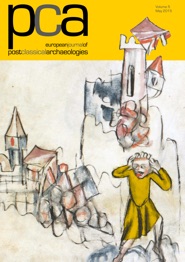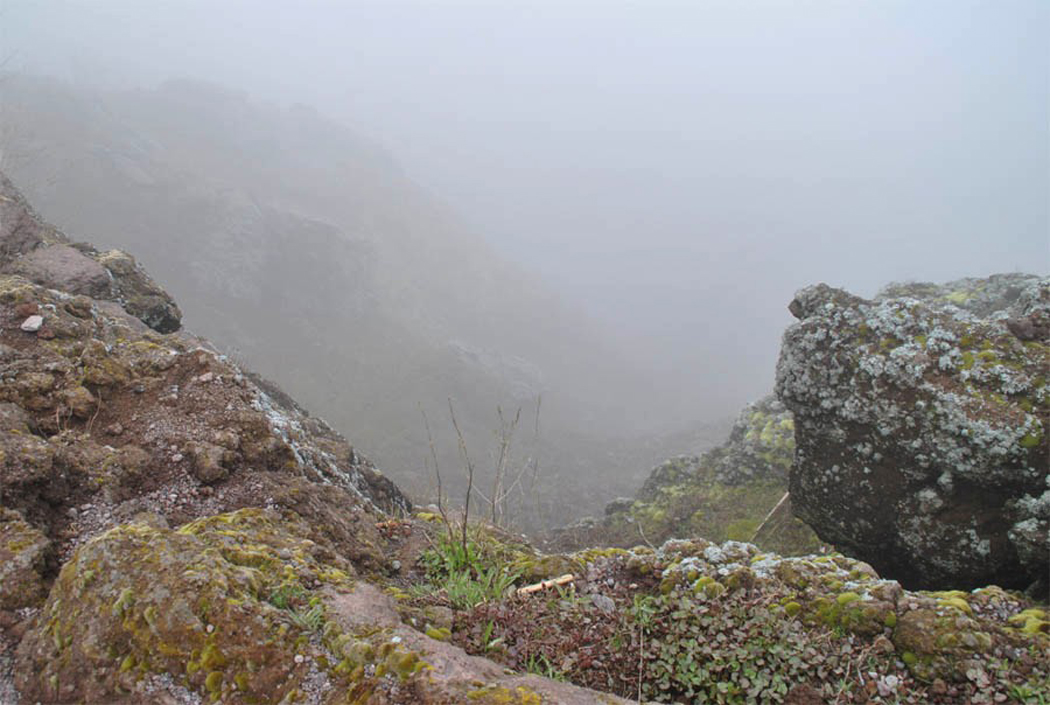Natural disasters in the Middle Ages were met with resilience in a number of different ways: migration, rebuilding, re-settlements. 2015 issue of the journal, Postclassical Archaeologies, focus on this theme
 European Journal of Post-Classical Archaeologies, Volume 5 (2015)
European Journal of Post-Classical Archaeologies, Volume 5 (2015)
ISSN 2039-7895
Sales: www.archeologica.it
The impact of natural disasters and climate change in different European regions as well as the resilience of societies to counteract the costs is currently generating a lot of interest among medieval archaeologists and historians. One reason is, of course, the spectre, which the threatening climatic crisis in the 21st century is raising. Is it possible to meet these challenges? May we learn something from past natural disasters and what followed? And more specifically: how did people in the middle ages react to climatic and natural disasters and hazards?
These questions are at the fore of the most recent issue of the journal: Post-Classical archaeologies, which offers six very interesting articles, highly pertinent for both medievalists and archaeologists.
Volcanic Events
In the first article, Conor Kostick and Francis Ludlow return to the question of the dating of volcanic events and their impact upon European Society. It has for a long time been apparent that a marked cooling took place in the Europe following the Roman optimum. This was in all likelihood caused by massive sulphate aerosols being injected into the stratosphere, diminishing the sunlight and in its wake causing widespread crop failures and famines. This coincided with the widespread barbarian migrations into the rapidly disintegrating Roman Empire from the late 4th century and onwards. One challenge, however, has been the more precise coupling between the climatic changes and the dates (and locations) of the volcanic events, which it is generally believed caused these large-scale migratory movements. New studies of the ice-cores harvested in the Arctic and Antarctic have moved the dates by up to seven years, proposing a new chronology and a better fit. It is this “fitting”, which Kostick and Ludlow have undertaken here. Focus is especially on the Volcanic eruption of Vesuvius AD 472, the two events AD 536 and 540 and AD 763-4. The last event was probably also a so-called double event (coinciding volcanic eruptions), which is believed to reinforce the impact exponentially.
Migration

Another article by Armin Volkmann on Climate change, Environment and Migration follows hard on the heels of the study by Kostick and Ludlow. This is a GIS-based study of the changes in settlement density from the Roman Iron Age to the Early Middle Ages in the river Oder region (from where it is believed the core of the people, who later identified themselves as “Vandals”, originated). Of especial interest here is the rapid decline in settlements from AD 380 and onwards, which continued into around AD 700. In this period the region between the River Oder and the Vistula was basically empty of people. This is one of those remarkable works done by literally plodding German archaeologists bent on getting precise overviews of regional shifts; studies, which really help us visualize, what happened in the crucial centuries before, during and after the migration period. In his conclusion, we can learn that already in the late Roman Warm Iron Age, there was a substantial migration in spite of the warm and moist climate. This was caused by the gradual weakening of the Roman Empire post AD 254, which created a significant pull-factor in the form of opportunities for plundering, as witnessed by a series of particularly rich furnished graves. In the early migration period a dramatic worsening of the climate virtually destroyed the basis for the traditional subsistence economy (AD 380 – 480), resulting in a very intense migration out of the region. During the next period, AD 480 – 700, climate shifted again. However, even if wetter and less droughty, it still represented a very unattractive region to settle in; especially since the preceding migration must have caused a loss of agricultural expertise while the landscape had reforested. No labour force was available for reclamation of the land. At the same time, the region further south – the Spree-Havel area became marshy and uninhabitable. Lured south, the regions became nearly empty of settlements in this period. This situation continued until the so-called “Slavic immigration into the area took place from around Ad 700. This vary careful study of the evidence from a particular region basically contradicts the more “optimistic” thinking concerning the size and impact of the early medieval migrations, which still dominates among certain old-school archaeologists.
Tsunamis, Earthquakes, Flooding and Sand

Next up, are a couple of articles, which focus on particular environmental disasters caused by tsunamis, earthquakes, flooding and sand drifts. Carlos Arteaga-Cardineau takes as his departure the earthquake in Lorca in 2011, where 9 people died and which left large parts of the city falling apart, and explores the correspondence between the written and the archaeological sources, while identifying the impact upon ruined settlements and cities. Focus is especially on Baelo Claudia, founded in the 2nd Century, but destroyed in the 4th century by a major earthquake and probable tsunami. Some post-classical rebuilding followed, but the town was basically left in ruins in the 6th century. Another catastrophic event – the tsunami in AD 755 – probably caused as much devastation causing Arteaga-Cardineau to reflect upon the incalculable devastation, which might result from similar disasters, waiting to happen in the 21st century, should they affect the Golden Coast of present-day Andalucía.

Somewhat different conclusions are reached by Gian Pietro Brogiolo, who has studied in detail the impact of flooding in Northern Italy, more precisely the wider region around Padua and Venice. The area in question was undoubtedly hit by a series of fluctuating climatic events, which from time to time caused floods and which necessitated continuous re-adaptation. However, the key-word here is exactly re-adaptions, restorations, and rebalancing of human activities and settlements.
This was not quite an option for the good people of the coasts in the British Isles, threated by wind blown sand and drifting, caused by both climatic changes and human activities like rabbiting, overgrazing and the stripping of vegetation. Although Peter J. Brown tells how a variety of strategies were applied, such as earthworks and barriers, the results were in the long run devastating for villagers and townsfolk: prayers did in the end not inhibit the sand nor the inundation of their homes. However, it does seem that human over-exploitation was the main cause. Sand-drifting became a major disaster in the 14th century following the agricultural intensification in the 13th century. Such a village was Kenfig, a former village in Bridgend in Wlaes. Here a settlement can be dated back to the Bronze age. However, in the 13th century, the village had to be relocated further inland, while all that remains of the former castle of Kenwig, is covered by sand dunes.
Cattle Plague

Finally a study by Timothy P. Newfield outlines the background for the episodic livestock epidemics, which took place in early postclassical Europe (AD 400 – 1000). It addresses both minor and major outbreaks of disease as well as events caused by anomalous climate and extreme weather. It is argued that climate via intermediary factors facilitated the spread of epizootics. A special case is the cattle plague of c. 940, which is well-documented in both chronicles and historical writings of that time, while widespread famines and crop-failures also earned extensive reporting. Newfield couples these disasters with yet another double event of volcanic eruptions, which took place around AD 940. Again this precise coupling has been made available through the revaluation of the evidence of the ice-cores, thus circling the arguments presented in the first article in this very commendable collection of studies.
Be forewarned: this journal is not an easy read. Heavy on archaeological jargon, it may hinder some readers. However, it is really well worth the effort and historians and archaeologists should do well to look out for the next issue of the journal.
Karen Schousboe
ABOUT THE JOURNAL:
European Journal of Post-Classical Archaeology
